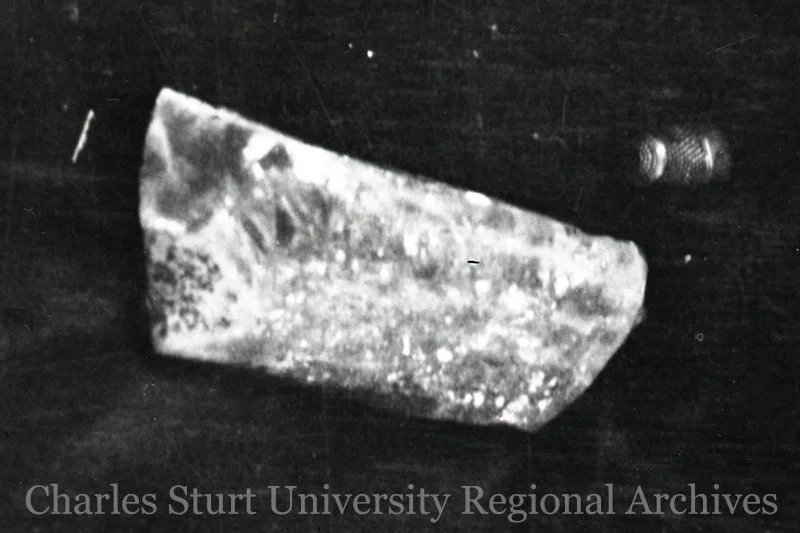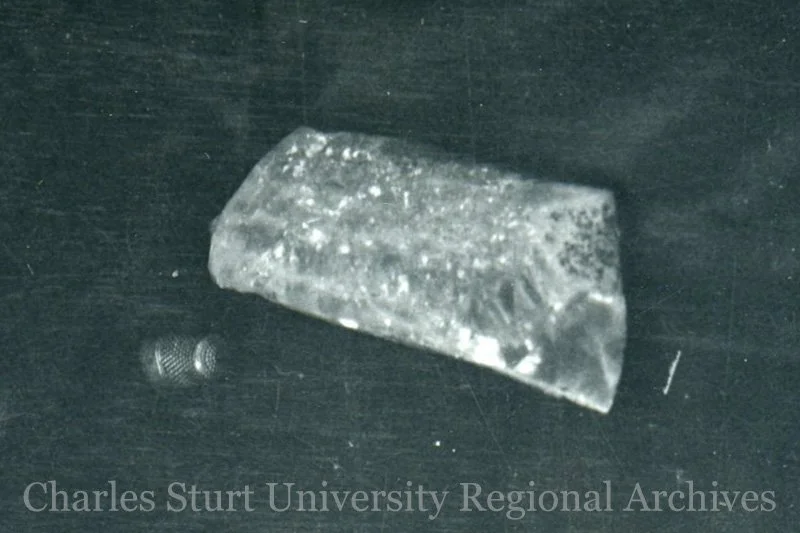Albert “Possum” Green
Albert “Possum” Green was born in 1907 in England. He arrived in Australia in 1924 and first worked on properties in central Queensland. By 1925 he was living in Walgett, New South Wales.
Albert was a keen photographer, evidently he was never without his trusty camera. Around 1928, he took a large series of photographs in the Lightning Ridge area, covering life on Angledool Station, the sinking of bores, sheep grazing, construction of buildings, road maintenance, flora and fauna and many other seemingly mundane topics. These photographs offer an invaluable insight into day-to-day activities on Angledool, Boonewell and Branxton stations as well as around the Collarenebri and Merrywinebone areas.
Among the more exciting photographs taken by Green are a series of photographs of Jack McNicol shortly after his discovery of the Pandora stone, along with the earliest detailed (black and white) photographs of the famous opal.
(Above) Green’s photographs of Pandora, 1928.
In the 1930s he moved to the Tumut area, where he spent much of his life.
Green’s photographic collection, held by the Charles Sturt University Regional Archives in Wagga Wagga, contains over 3,000 prints and negatives. Most were taken during his travels through the New South Wales Snowy Mountains region in the 1950s and 1960s, though his work spans from 1923 until the early 1970s. He was known for meticulous documentation, noting on the reverse of each print the location, date, time, weather conditions, and even his camera’s aperture settings — all invaluable pieces of data for historians.
Green later lived in Yass, New South Wales, where he died on 29 June 1980 at the age of 73.
Article: Research by Russell Gawthorpe and Leisa Carney, edited by Russell Gawthorpe. LRHS research compiled by Len Cram and Barbara Moritz. Sources: ‘The Possum Green Collection’, Charles Sturt University Regional Archives; ‘Possum’s Photographs: A Snapshot’, Alan Lanyon, 2024.


